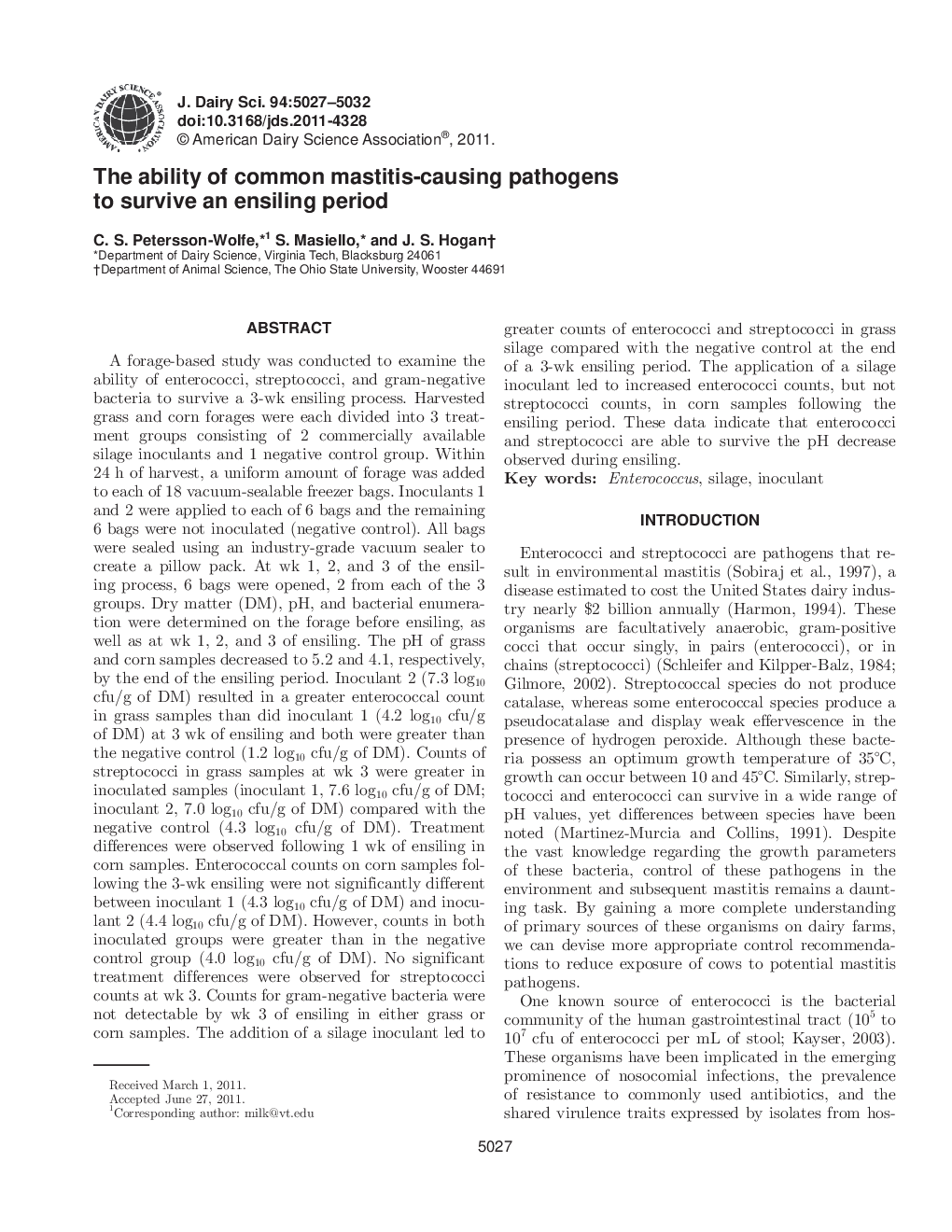| Article ID | Journal | Published Year | Pages | File Type |
|---|---|---|---|---|
| 10981969 | Journal of Dairy Science | 2011 | 6 Pages |
Abstract
A forage-based study was conducted to examine the ability of enterococci, streptococci, and gram-negative bacteria to survive a 3-wk ensiling process. Harvested grass and corn forages were each divided into 3 treatment groups consisting of 2 commercially available silage inoculants and 1 negative control group. Within 24Â h of harvest, a uniform amount of forage was added to each of 18 vacuum-sealable freezer bags. Inoculants 1 and 2 were applied to each of 6 bags and the remaining 6 bags were not inoculated (negative control). All bags were sealed using an industry-grade vacuum sealer to create a pillow pack. At wk 1, 2, and 3 of the ensiling process, 6 bags were opened, 2 from each of the 3Â groups. Dry matter (DM), pH, and bacterial enumeration were determined on the forage before ensiling, as well as at wk 1, 2, and 3 of ensiling. The pH of grass and corn samples decreased to 5.2 and 4.1, respectively, by the end of the ensiling period. Inoculant 2 (7.3 log10 cfu/g of DM) resulted in a greater enterococcal count in grass samples than did inoculant 1 (4.2 log10 cfu/g of DM) at 3 wk of ensiling and both were greater than the negative control (1.2 log10 cfu/g of DM). Counts of streptococci in grass samples at wk 3 were greater in inoculated samples (inoculant 1, 7.6 log10 cfu/g of DM; inoculant 2, 7.0 log10 cfu/g of DM) compared with the negative control (4.3 log10 cfu/g of DM). Treatment differences were observed following 1 wk of ensiling in corn samples. Enterococcal counts on corn samples following the 3-wk ensiling were not significantly different between inoculant 1 (4.3 log10 cfu/g of DM) and inoculant 2 (4.4 log10 cfu/g of DM). However, counts in both inoculated groups were greater than in the negative control group (4.0 log10 cfu/g of DM). No significant treatment differences were observed for streptococci counts at wk 3. Counts for gram-negative bacteria were not detectable by wk 3 of ensiling in either grass or corn samples. The addition of a silage inoculant led to greater counts of enterococci and streptococci in grass silage compared with the negative control at the end of a 3-wk ensiling period. The application of a silage inoculant led to increased enterococci counts, but not streptococci counts, in corn samples following the ensiling period. These data indicate that enterococci and streptococci are able to survive the pH decrease observed during ensiling.
Keywords
Related Topics
Life Sciences
Agricultural and Biological Sciences
Animal Science and Zoology
Authors
C.S. Petersson-Wolfe, S. Masiello, J.S. Hogan,
